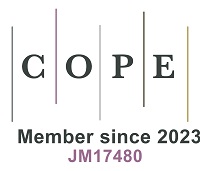REFERENCES
1. Lal R, Brevik EC, Dawson L, et al. Managing soils for recovering from the COVID-19 pandemic. Soil Syst 2020;4:46.
2. Grünberg J, Nieberg H, Schmidt T. G. Carbon footprints of food: a critical reflection. Landbauforsch. Available from: https://www.researchgate.net/publication/288777178_Carbon_footprints_of_food_A_critical_reflection [Last accessed on 14 Apr 2022].
3. IPCC. Climate change and land: an IPCC special report on climate change, desertification, land degradation, sustainable land management, food security, and greenhouse gas fluxes in terrestrial ecosystems. Available from: https://philpapers.org/rec/SHUCCA-2 [Last accessed on 13 Apr 2022].
4. Balogh J. M. Agriculture-specific determinants of carbon footprint. Available from: http://real.mtak.hu/105131/1/Studies-121-3-Balogh.pdf [Last accessed on 13 Apr 2022].
5. Khan S, Hanjra MA. Footprints of water and energy inputs in food production-global perspectives. Food Policy 2009;34:130-40.
6. U.N. World population prospects 2019: Highlights (ST/ESA/SER.A/423). Available from: https://population.un.org/wpp/publications/files/wpp2019_highlights.pdf [Last accessed on 13 Apr 2022].
7. FAO I, UNICEF and WHO. The state of food security and nutrition in the world 2020. Transforming food systems for affordable healthy diets. Available from: https://www.fao.org/publications/card/zh/c/CA9692EN/ [Last accessed on 13 Apr 2022].
8. Röös E, Bajželj B, Smith P, Patel M, Little D, Garnett T. Greedy or needy? Global Environmental Change 2017;47:1-12.
9. Fanzo J, Haddad L, Schneider KR, et al. Viewpoint: rigorous monitoring is necessary to guide food system transformation in the countdown to the 2030 global goals. Food Policy 2021;104:102163.
10. von Braun J, Afsana K, Fresco L.O, Hassan M, Torero M. Food system concepts and definitions for science and political action. Available from: https://www.nature.com/articles/s43016-021-00361-2 [Last accessed on 13 Apr 2022].
11. U.N. Transforming our world: the 2030 agenda for sustainable development, united nations summit on sustainable development. Available from: https://stg-wedocs.unep.org/bitstream/handle/20.500.11822/11125/unepswiosm1inf7sdg.pdf?sequence=1 [Last accessed on 13 Apr 2022].
12. Lal R, Bouma J, Brevik E, et al. Soils and sustainable development goals of the United Nations: An International Union of Soil Sciences perspective. Geoderma Regional 2021;25:e00398.
13. Wiek A, Tkacz K. Carbon footprint: an ecological indicator in food production. Available from: https://www.semanticscholar.org/paper/Carbon-footprint%3A-an-ecological-indicator-in-food-Wi%C4%99k-Tkacz/c332c4c4e5a4154f680fc90d50bbb643f695b390 [Last accessed on 13 Apr 2022].
14. Chen R, Zhang R, Han H. Where has carbon footprint research gone? Ecological Indicators 2021;120:106882.
15. Röös E, Sundberg C, Hansson P. -A. Carbon footprint of food products. In: Muthu, S.S. (Ed.), Assessment of carbon footprint in different industrial sectors, Vol 1. pp. 85-112. Available from: https://link.springer.com/chapter/10.1007/978-981-4560-41-2_4 [Last accessed on 13 Apr 2022].
16. IPCC. Climate change 1995: the IPCC second assessment report. Scientific-technical analysis of impacts, adaptations, and mitigation of climate change. Available from: https://www.ipcc.ch/report/ar2/wg2/ [Last accessed on 13 Apr 2022].
18. World Bank. CO2 emissions (metric tons per capita). Available from: https://data.worldbank.org/indicator/EN.ATM.CO2E.PC [Last accessed on 13 Apr 2022].
19. Tiseo I. Historical carbon dioxide emissions from global fossil fuel combustion and industrial processes from 1750 to 2020. Available from: https://www.statista.com/statistics/264699/worldwide-co2-emissions/ [Last accessed on 13 Apr 2022]
20. Hoekstra AY, Wiedmann TO. Humanity’s unsustainable environmental footprint. Science 2014;344:1114-7.
21. Lal R. Soil and sanskriti. Available from: https://www.semanticscholar.org/paper/Soil-and-Sanskriti-Lal/e152f6c25061149e116345d1f5f23925226c1785 [Last accessed on 13 Apr 2022].
23. FAO, ITPS. Status of the World’s Soil Resources (SWSR)-main report. Available from: https://www.fao.org/documents/card/zh/c/c6814873-efc3-41db-b7d3-2081a10ede50/ [Last accessed on 13 Apr 2022].
24. Bongaarts J. IPBES. Summary for policymakers of the global assessment report on biodiversity and ecosystem services of the intergovernmental science-policy platform on biodiversity and ecosystem services. Population and Development Review 2019;45:680-1.
26. Weinzettel J, Vačkářů D, Medková H. Potential net primary production footprint of agriculture: a global trade analysis. Journal of Industrial Ecology 2019;23:1133-42.
27. Lal R. Digging deeper: a holistic perspective of factors affecting soil organic carbon sequestration in agroecosystems. Glob Chang Biol 2018;24:3285-301.
28. Lal R, Smith P, Jungkunst H. F, et al. The carbon sequestration potential of terrestrial ecosystems. Available from: https://www.jswconline.org/content/73/6/145A.short [Last accessed on 13 Apr 2022].
29. Xu Z, Sun DW, Zeng XA, Liu D, Pu H. Research developments in methods to reduce the carbon footprint of the food system: a review. Crit Rev Food Sci Nutr 2015;55:1270-86.
30. Leach AM, Emery KA, Gephart J, et al. Environmental impact food labels combining carbon, nitrogen, and water footprints. Food Policy 2016;61:213-23.
31. Wu X, Hu S, Mo S. Carbon footprint model for evaluating the global warming impact of food transport refrigeration systems. Journal of Cleaner Production 2013;54:115-24.
32. Lal R, Monger C, Nave L, Smith P. The role of soil in regulation of climate. Philos Trans R Soc Lond B Biol Sci 2021;376:20210084.
33. Lu C. Q, Yu Z, Tian H.Q, Hennessy D.A, Feng H.L, et al. Increasing carbon footprint of grain crop production in the US Western Corn Belt. Available from: https://iopscience.iop.org/article/10.1088/1748-9326/aae9fe/meta [Last accessed on 13 Apr 2022].
34. Millar N. , Doll, J.E., Robertson, G.P., 2014. Management of nitrogen fertilizer to reduce nitrous oxide emissions from field crops (E3152). Available from: https://www.canr.msu.edu/resources/management_of_nitrogen_fertilizer_to_reduce_nitrous_oxide_emissions_from_fi [Last accessed on 13 Apr 2022].
35. Vittis Y, Folberth C, Bundle S. -C, Obersteiner M. Restoring nature at lower food production costs. Available from: https://www.leap.ox.ac. :uk/article/restoring-nature.
36. Rockström J, Steffen W, Noone K, et al. Planetary boundaries: Exploring the safe operating space for humanity. Available from: http://www.ecologyandsociety.org/vol14/iss2/art32/ [Last accessed on 13 Apr 2022].
37. Liu W, Zhang G, Wang X, Lu F, Ouyang Z. Carbon footprint of main crop production in China: magnitude, spatial-temporal pattern and attribution. Sci Total Environ 2018;645:1296-308.
38. Sah D, Devakumar A. The carbon footprint of agricultural crop cultivation in India. Carbon Management 2018;9:213-25.
39. O’brien M, Schütz H, Bringezu S. The land footprint of the EU bioeconomy: Monitoring tools, gaps and needs. Land Use Policy 2015;47:235-46.
40. Gan Y, Liang C, Wang X, Mcconkey B. Lowering carbon footprint of durum wheat by diversifying cropping systems. Field Crops Research 2011;122:199-206.
41. FAO. Climate smart agiculture source book. Available from: http://www.fao.org/climate-smart-agriculture-sourcebook/en/ [Last accessed on 13 Apr 2022].
42. Brankatschk G. , Finkbeiner M. Crop rotations and crop residues are relevant parameters for agricultural carbon footprints. Available from: https://link.springer.com/article/10.1007/s13593-017-0464-4 [Last accessed on 13 Apr 2022].
43. Castanheira ÉG, Freire F. Greenhouse gas assessment of soybean production: implications of land use change and different cultivation systems. Journal of Cleaner Production 2013;54:49-60.
44. Hu Y, Zheng J, Kong X, Sun J, Li Y. Carbon footprint and economic efficiency of urban agriculture in Beijing-a comparative case study of conventional and home-delivery agriculture. Journal of Cleaner Production 2019;234:615-25.
45. Kassam A, Friedrich T, Derpsch R. Global spread of conservation agriculture. International Journal of Environmental Studies 2018;76:29-51.
46. Lal R, Mohtar R. H, Assi A.T, Ray R, Baybil H, et al. Soil as a basic nexus tool: soils at the center of the food-energy-water nexus. Available from: https://link.springer.com/article/10.1007/s40518-017-0082-4 [Last accessed on 13 Apr 2022].
47. Okigbo B. N, Lal R. Role of cover crops in soil and water conservation. Available from: https://agris.fao.org/agris-search/search.do?recordID=XF8001981 [Last accessed on 13 Apr 2022].
48. Nair PK, Mohan Kumar B, Nair VD. Agroforestry as a strategy for carbon sequestration. Z Pflanzenernähr Bodenk 2009;172:10-23.
49. Rosenstock TS, Wilkes A, Jallo C, et al. Making trees count: measurement and reporting of agroforestry in UNFCCC national communications of non-Annex I countries. Agric Ecosyst ;284:106569.
50. Brown RM, Dillon CR, Schieffer J, Shockley JM. The carbon footprint and economic impact of precision agriculture technology on a corn and soybean farm. J Environ. Econ Polic 2016;5:335-48.
51. Ratchawat T, Panyatona S, Nopchinwong P, Chidthaisong A, Chiarakorn S. Carbon and water footprint of robusta coffee through its production chains in Thailand. Available from: https://link.springer.com/article/10.1007/s10668-018-0299-4 [Last accessed on 13 Apr 2022].
52. van Rikxoort H, Schroth G, Laderach P, Rodriguez-Sanchez B. Carbon footprints and carbon stocks reveal climate-friendly coffee production. Available from: https://link.springer.com/article/10.1007/s13593-014-0223-8 [Last accessed on 13 Apr 2022].
53. Martins L. D, Eugenio F.C, Rodrigues W.N, Tomaz M.A, dos Santos A.R, et al. Carbon and water footprints in Brazilian coffee plantations - the spatial and temporal distribution. Available from: https://novaresearch.unl.pt/en/publications/carbon-and-water-footprints-in-brazilian-coffee-plantations-the-s [Last accessed on 13 Apr 2022].
54. Persson U. M, Johansson D.J.A, Cederberg C, Hedenus F, Bryngelsson D. Climate metrics and the carbon footprint of livestock products: where’s the beef? Available from: https://iopscience.iop.org/article/10.1088/1748-9326/10/3/034005 [Last accessed on 13 Apr 2022].
55. Patra AK. Accounting methane and nitrous oxide emissions, and carbon footprints of livestock food products in different states of India. Journal of Cleaner Production 2017;162:678-86.
56. Ridoutt BG, Page G, Opie K, Huang J, Bellotti W. Carbon, water and land use footprints of beef cattle production systems in southern Australia. Journal of Cleaner Production 2014;73:24-30.
57. Cerri CC, Moreira CS, Alves PA, et al. Assessing the carbon footprint of beef cattle in Brazil: a case study with 22 farms in the State of Mato Grosso. Journal of Cleaner Production 2016;112:2593-600.
58. Rojas-Downing MM, Nejadhashemi AP, Elahi B, et al. Food footprint as a measure of sustainability for grazing dairy farms. Environ Manage 2018;62:1073-88.
59. Yan MJ, Humphreys J, Holden NM. The carbon footprint of pasture-based milk production: can white clover make a difference? J Dairy Sci 2013;96:857-65.
60. Ridoutt B. Climate neutral livestock production-a radiative forcing-based climate footprint approach. Journal of Cleaner Production 2021;291:125260.
61. Lal R. Soil carbon sequestration impacts on global climate change and food security. Science 2004;304:1623-7.
62. Buratti C, Fantozzi F, Barbanera M, Lascaro E, Chiorri M, Cecchini L. Carbon footprint of conventional and organic beef production systems: an Italian case study. Sci Total Environ 2017;576:129-37.
63. Ibidhi R, Ben Salem H. Water footprint of livestock products and production systems: a review. Anim Prod Sci 2020;60:1369.
64. Velarde-Guillen J, Arndt C, Gomez C. A. Carbon footprint in Latin American dairy systems. Available from: https://link.springer.com/article/10.1007/s11250-021-03021-6 [Last accessed on 13 Apr 2022].
65. Espinoza-Orias N, Stichnothe H, Azapagic A. The carbon footprint of bread. Available from: https://link.springer.com/article/10.1007/s11367-011-0271-0 [Last accessed on 13 Apr 2022].
66. Treu H, Nordborg M, Cederberg C, et al. Carbon footprints and land use of conventional and organic diets in Germany. Journal of Cleaner Production 2017;161:127-42.
67. Pearson P. Driven to waste: designing a better global food system. Available from: https://www.wwf.or.th/?369116/Driven-to-Waste-Designing-a-Better-Global-Food-System [Last accessed on 13 Apr 2022].
68. RTS. Food waste in America in 2021: statistics + facts. Available from: https://www.rts.com/wp-content/uploads/2021/04/RTS_Food_Waste_Guide_2021.pdf [Last accessed on 14 Apr 2022].
69. RTS. Food Waste in America in 2022: statistics & facts. Available from: https://www.rts.com/resources/guides/food-waste-america/ [Last accessed on 14 Apr 2022].
70. EPA. United States 2030 food loss and waste reduction goal. Available from: https://www.epa.gov/sustainable-management-food/united-states-2030-food-loss-and-waste-reduction-goal [Last accessed on 13 Apr 2022].
71. Reutter B, Lant P, Reynolds C, Lane J. Food waste consequences: environmentally extended input-output as a framework for analysis. Journal of Cleaner Production 2017;153:506-14.
72. Tonini D, Albizzati PF, Astrup TF. Environmental impacts of food waste: learnings and challenges from a case study on UK. Waste Manag 2018;76:744-66.
73. Saraiva Schott A, Cánovas A. Current practice, challenges and potential methodological improvements in environmental evaluations of food waste prevention-a discussion paper. Resour Conserv Recycl 2015;101:132-42.
74. Song G, Semakula HM, Fullana-i-palmer P. Chinese household food waste and its’ climatic burden driven by urbanization: a bayesian belief network modelling for reduction possibilities in the context of global efforts. Journal of Cleaner Production 2018;202:916-24.
75. Kashyap D, Agarwal T. Food loss in India: water footprint, land footprint and GHG emissions. Available from: https://link.springer.com/article/10.1007/s10668-019-00325-4 [Last accessed on 13 Apr 2022].
76. Golan E. The US food waste challenge. Available from: https://www.ncsl.org/documents/statefed/SarahEckhouseUSDA.pdf [Last accessed on 13 Apr 2022].
77. Parfitt J, Barthel M, Macnaughton S. Food waste within food supply chains: quantification and potential for change to 2050. Philos Trans R Soc Lond B Biol Sci 2010;365:3065-81.
78. Kibler KM, Reinhart D, Hawkins C, Motlagh AM, Wright J. Food waste and the food-energy-water nexus: a review of food waste management alternatives. Waste Manag 2018;74:52-62.
79. Sarker T, Kibler K, Reinhart D. Concept mapping of food waste management alternatives within the food-energy-water nexus. Available from: https://ascelibrary.org/doi/abs/10.1061/9780784479865.016 [Last accessed on 13 Apr 2022].
80. Schanes K, Giljum S, Hertwich E. Low carbon lifestyles: a framework to structure consumption strategies and options to reduce carbon footprints. Journal of Cleaner Production 2016;139:1033-43.
81. FAO. Food Wastage Footprint: Full-Cost Accounting. Available from: https://www.fao.org/3/i3991e/i3991e.pdf [Last accessed on 13 Apr 2022].
82. Friedlingstein P, Jones M. W, O’Sullivan M, et al. Global carbon budget 2021. Available from: https://essd.copernicus.org/preprints/essd-2021-386/ [Last accessed on 13 Apr 2022].
83. Ramaswamy V, Boucher O, Haigh J, et al. Radiative forcing of climate change. Available from: https://www.osti.gov/biblio/899821 [Last accessed on 13 Apr 2022].
84. Worldometer, 2022. CO2 Emissions per Capita. Available from: https://www.worldometers.info/co2-emissions/co2-emissions-per-capita/ [Last accessed on 14 Apr 2022].
85. FAO. FAOSTAT statistical database. Available from: https://www.fao.org/faostat/en/ [Last accessed on 13 Apr 2022].








